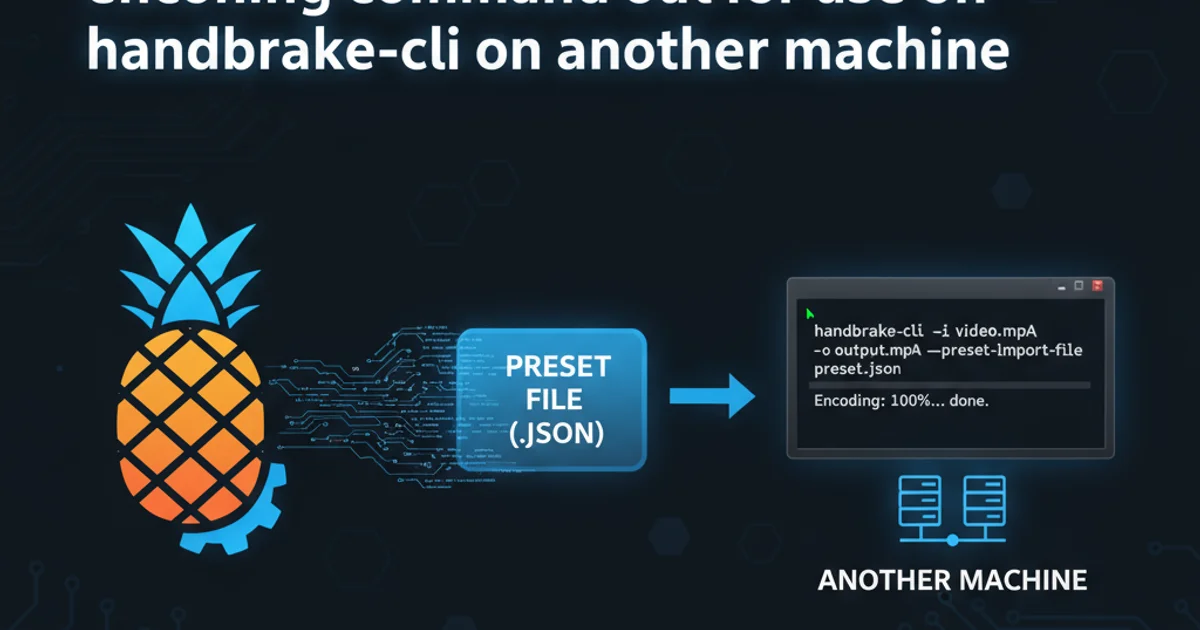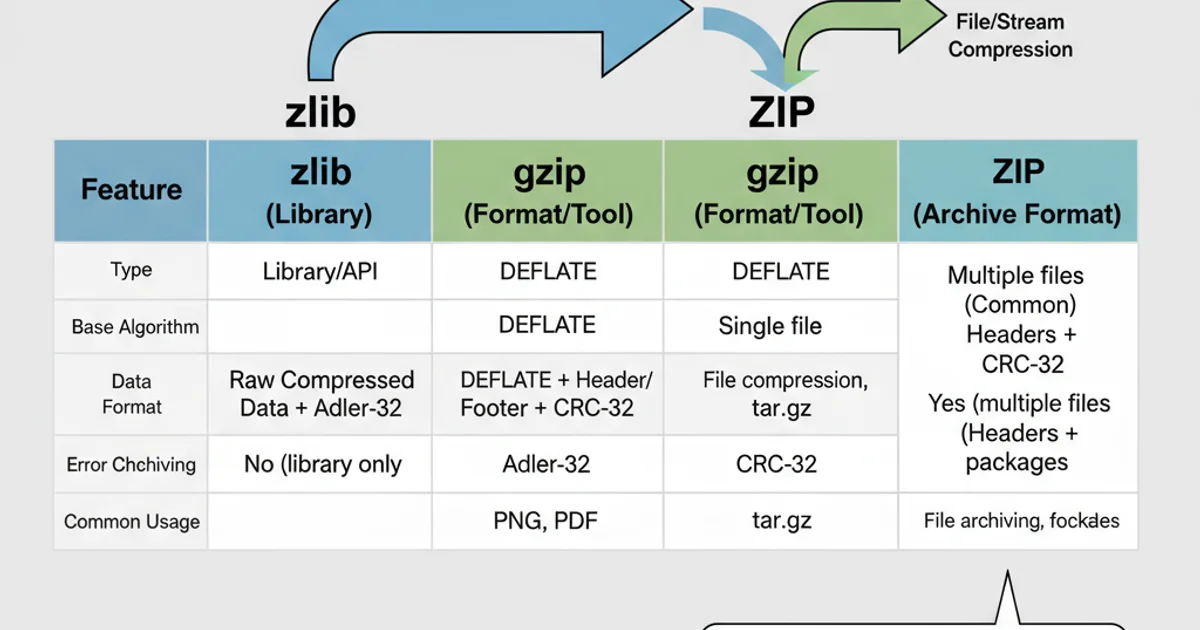How are zlib, gzip and zip related? What do they have in common and how are they different?
Categories:
Understanding zlib, gzip, and zip: Common Ground and Key Differences

Explore the relationships and distinctions between zlib, gzip, and zip – three fundamental technologies for data compression and archiving. Learn when and why to use each.
Data compression is a cornerstone of modern computing, enabling efficient storage and transmission of information. Among the myriad compression technologies, zlib, gzip, and zip are frequently encountered, often leading to confusion due to their similar names and overlapping functionalities. While all three are related to reducing file sizes, they serve distinct purposes and operate at different levels of abstraction. This article will demystify their relationship, highlighting their commonalities and crucial differences.
The Foundation: zlib
zlib is a software library that provides in-memory compression and decompression functions. It's not a file format itself, but rather an implementation of the DEFLATE compression algorithm, along with a small wrapper for error checking. DEFLATE is a combination of LZ77 and Huffman coding, known for its good balance of compression ratio and speed. zlib is widely used as a building block in many applications, including operating systems, web servers, and other compression utilities.
flowchart TD
A[Original Data] --> B[DEFLATE Algorithm]
B --> C[Compressed Data Stream]
C -- "Adds header/footer for integrity" --> D["zlib Stream (RFC 1950)"]
D --> E[Application/Library]
E -- "Uses zlib API" --> F[Further Processing]How zlib processes data using the DEFLATE algorithm.
zlib as the engine that performs the actual compression. It's a low-level library that other tools leverage.The Single-File Compressor: gzip
gzip (GNU zip) is a file format and a command-line utility for compressing and decompressing single files. It uses the zlib compression library internally to perform the DEFLATE compression. The gzip format adds a header and a footer to the zlib compressed data stream. This header includes metadata like the original filename, modification time, and operating system, while the footer contains a CRC-32 checksum for integrity checking and the original uncompressed file size. gzip is commonly used for compressing individual files, especially in Unix-like environments, and is often combined with tar for archiving multiple files (e.g., .tar.gz or .tgz).
# Compress a single file
gzip myfile.txt
# Decompress a gzip file
gunzip myfile.txt.gz
# Combine with tar for archiving multiple files
tar -czvf archive.tar.gz dir_to_compress/
Common gzip commands for compression and decompression.
The Archiver: zip
The zip format is an archiving and compression format that can store one or more files and directories. Unlike gzip, which compresses a single stream, zip can bundle multiple files and directories into a single archive, compressing each entry individually. It also uses the DEFLATE algorithm (often provided by zlib) but includes its own file format specification that allows for directory structures, file metadata, encryption, and various compression methods (though DEFLATE is the most common). The zip format is widely supported across different operating systems and is the de facto standard for distributing collections of files.
flowchart TD
A["Original Files/Folders"] --> B["Zip Utility (e.g., PKZIP, Info-ZIP)"]
B --> C1["File 1 (DEFLATE)"]
B --> C2["File 2 (DEFLATE)"]
B --> C3["Folder Structure"]
C1 & C2 & C3 --> D["Zip Archive (PKWARE format)"]
D -- "Contains metadata, CRC, etc." --> E["Single .zip file"]How the zip format archives multiple files and folders.
zip primarily uses DEFLATE, the zip specification allows for other compression algorithms, though they are less common in practice.Commonalities and Differences
The core commonality among zlib, gzip, and zip is their reliance on the DEFLATE compression algorithm. This algorithm is highly efficient and forms the backbone of their compression capabilities. However, their primary differences lie in their scope and the file formats they define.

Key distinctions between zlib, gzip, and zip.
In summary:
- zlib: A low-level library implementing the DEFLATE algorithm. It's the compression 'engine'.
- gzip: A file format and utility for compressing single files, using
zlibinternally. It adds a minimal header/footer for integrity and metadata. - zip: An archive file format and utility for bundling multiple files and directories, also typically using
zlibfor compression. It provides a more complex structure for archiving.
When to Use Which
Choosing the right tool depends on your specific needs:
- Use
zlibwhen you need to integrate compression directly into your application, working with in-memory data streams, or when building a custom file format that requires DEFLATE compression. - Use
gzipfor compressing individual files, especially log files, web content (e.g., HTTP compression), or when combining withtarto create compressed archives of multiple files and directories (e.g.,.tar.gz). - Use
zipwhen you need to create a single archive containing multiple files and directories, maintain directory structures, or when distributing software and documents across different operating systems, as it's universally supported.